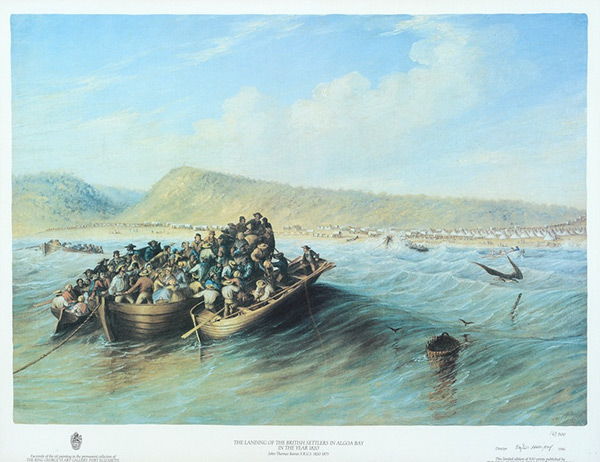THOMAS BAINES (1820 – 1875)
BIOGRAPHY
John Thomas Baines was born in King’s Lynn, Norfolk, England. His father was a master mariner and Baines was educated at Horatio Nelson’s Classical and Commercial Academy.
After arriving in Cape Town in 1842, he worked first as a painter for a cabinet-maker and later as a marine and portrait painter. Based in the Eastern Cape between 1848 and 1853, he undertook three journeys to the interior: first beyond the Orange River (1848), then beyond the Kei River and over the Winterberg (1849), then attempting to reach the Okavango Swamps (1850). He became South Africa’s first official war artist and recorded the Eighth Frontier War (1850–1853).
Baines returned to England in 1852 and published Scenery and Events in South Africa. In March 1855, he travelled to Australia as official artist with AC Gregory’s north Australian expedition. He was elected a fellow of the Royal Geographical Society and received its gold medal in 1858.
Later, he was artist to David Livingstone’s 1858 expedition to the Zambezi. Baines quarrelled with Livingstone on this trip and was unfairly dismissed for theft. He travelled to South West Africa (now Namibia) in 1862 and, on 23 July of that year, he reached Victoria Falls. It was on this expedition that Baines painted many of his famous scenes, which were reproduced in the album of prints The Victoria Falls, Zambezi River, published in 1865. He went to Victoria Falls primarily to meet Livingstone and clear his name, but he arrived too late – Livingstone had already left the area.
A bout of fever forced him to return to Cape Town and, in 1864, he returned to England. He returned to South Africa in 1868 and led an expedition to the Matabele King Mzilikazi, on behalf of the South African Goldfields Exploration Company. Mzilikazi, however, died before Baines reached him. Baines’s journal of residence in Africa, spanning the period 1842–1853, was published in two volumes, in 1961 and 1964 respectively. In 1873, he visited the Injembe district of Natal (now KwaZulu-Natal) to investigate gold deposits and attended King Cetshwayo’s coronation. He was busy writing an account of his expeditions when he fell ill and died in Durban on 8 May 1875.


